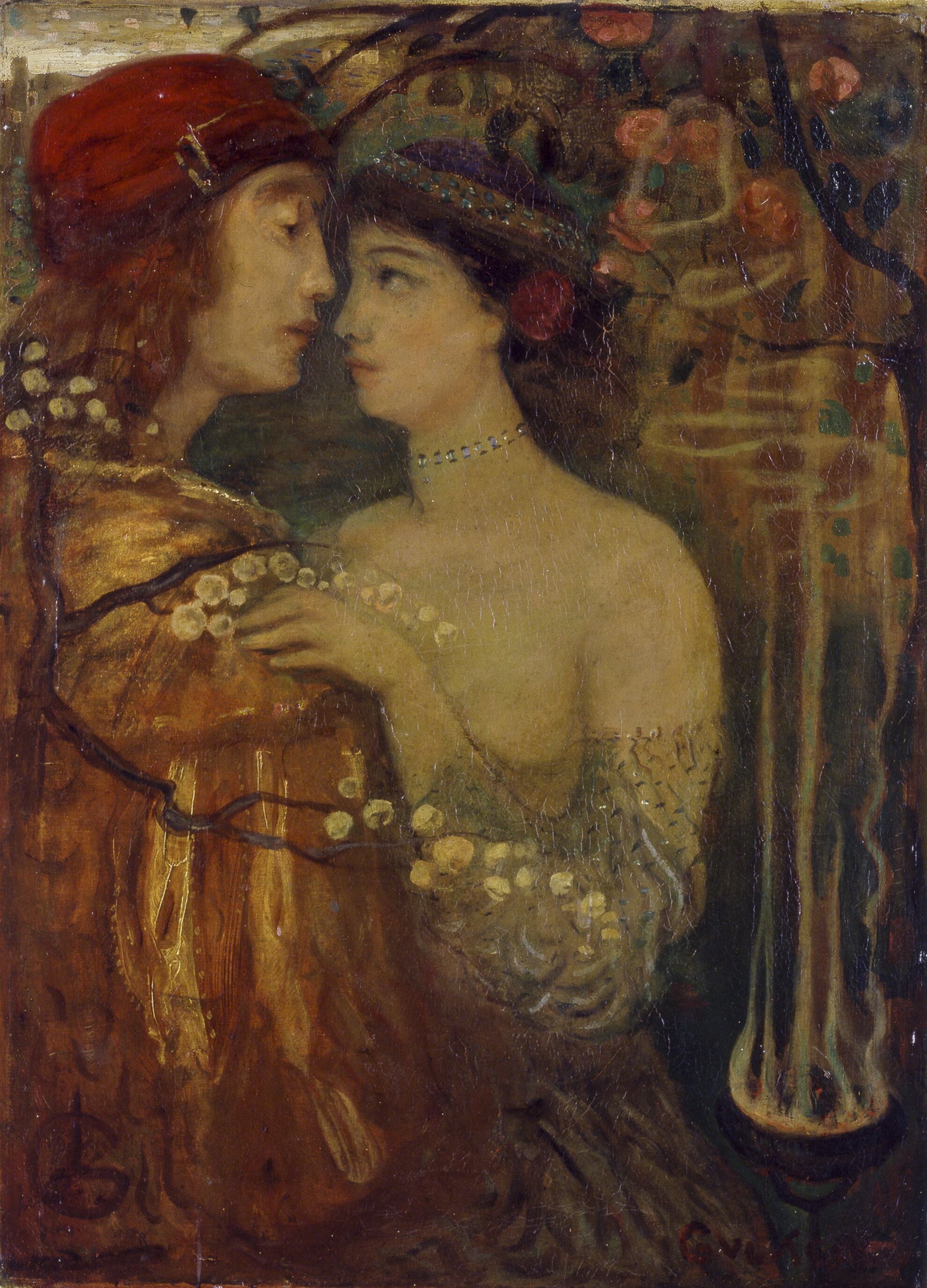The Pre-Raphaelites were more than an art movement, but rather a brotherhood, formed on a specific day in Gower Street, London, in 1848. It was a fraternity of seven artists whose guiding star was medieval and early Renaissance art.
Tackling similar subject matter, most notably Biblical, literary and historical, the Pre-Raphaelite Brotherhood aimed to depict nature in its scientific reality. The clarity of Michelangelo contemporary Raphael underscored their aesthetic – hence Pre-Raphaelite. Each artist signed his work ‘PRB’.
The PRB only stayed together for five years but they were to influence the later Arts and Crafts movement, the forerunner of Art Nouveau – also here in Hungary, as we shall see.
Desired Beauty: Pre-Raphaelite Masterpieces from the Tate Collection is the first exhibition in Hungary to provide a comprehensive picture of England’s most prominent art movement of the Victorian Age. It is complemented by The Beauty of Utopia, illustrating how this art impacted on its Hungarian counterpart, with particular reference to the Gödöllő artists’ colony, founded in 1901.
Desired Beauty is divided into nine themed sections. The first three, Medieval Moderns, Painted Poetry and Secular Faith, deal with the movement’s beginnings, including writings and illustrations. Fifty graphic works number among the 90-plus pieces in the exhibition as a whole.
Next come Modern Life and True to Nature, showing how science played a role in the PRB philosophy. The last three sections concentrate on women and romantic love, with themes of betrayal, desire and unfaithfulness.
Many
of the nearly 40 paintings are accompanied by a graphic, a piece of
writing or an illustration, particularly in the case of movement
leader Dante Gabriel Rossetti, who created
as many poems
and he did paintings, his so-called double works.
His Ecce Ancilla Domini! and
Monna Vanna are
on view here, along with The Day Dream, on loan from the Victoria &
Albert, one of his last paintings.
Jane Morris, wife of William
and muse (and probable lover) of Rossetti, is seen clutching
honeysuckle, surrounded by dark-green sycamore.

Two other paintings require particular attention. The Order of Release, 1746, by Millais depicts the wife of a Highland Jacobite soldier securing her husband’s freedom, but alludes to the artist’s developing relationship with the wife of art critic John Ruskin, Effie Gray, who would then leave him for Millais. The love triangle between them was one of the major scandals of the day – in Ruskin’s absence, the pair fell in love while travelling in Scotland.
A
later follower of the
Pre-Raphaelite
Brotherhood, John William
Waterhouse painted
The Lady of Shalott in 1888,
long after the movement was over and Rossetti had fatally succumbed
to his addiction to whisky and chloral hydrate.
Inspired by the
lyrical ballad of the same name, by Alfred Tennyson, The Lady of Shalott delves into
Arthurian legend, the lady in question adrift at Camelot, pining for
Sir Lancelot. The attention to natural detail, the birdlife and
flora, echo the tenets of the PRB.
In
1900, an exhibition of the works of English painter and craftsman
Walter Crane, a later
follower of the
Pre-Raphaelites, was held at Budapest’s
Museum of Applied Arts. A cult developed around
the artist, whose stay in Hungary was reported daily by the press.
He
would in turn inspire a similar movement here, the focus of the
accompanying exhibition at the Hungarian National Gallery, Utopia
Beauty, which begins with
excerpts from Crane’s
work and Hungary’s
enthusiasm for it.

Through
the British-Hungarian relations that developed at the turn of the
century, Pre-Raphaelite art prevailed in Hungarian literature, fine
and applied arts, and architecture. It
had the greatest impact on the members
of the Gödöllő artists’ colony and the early period of Lajos
Gulácsy, among others.
Born in Budapest in 1882,
Gulácsy and his dream-like art show elements of Art Nouveau and
Symbolism, ushering in the Surrealism which followed.
In all, 79 works are shown here 17 paintings, 59 graphics and one sculpture, some on loan from the Museum of Applied Arts, the Janus Pannonius Museum in Pécs, the Gödöllő City Museum and the Ignác Tragor Museum in Vác, plus documents, books and photos.
Desired Beauty: Pre-Raphaelite Masterpieces from the Tate Collection/The Beauty of Utopia
Hungarian National Gallery
District I. Szent György tér 2
Current opening hours: Wed-Sun 10am-6pm. Until 22 Aug.
Admission for those carrying an Immunity Certificate only. Social distancing rules apply.



